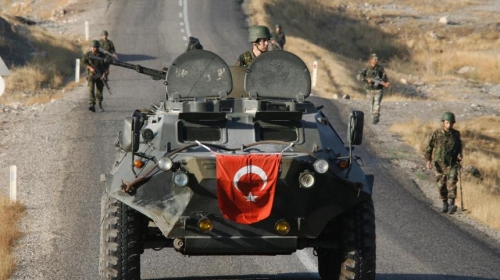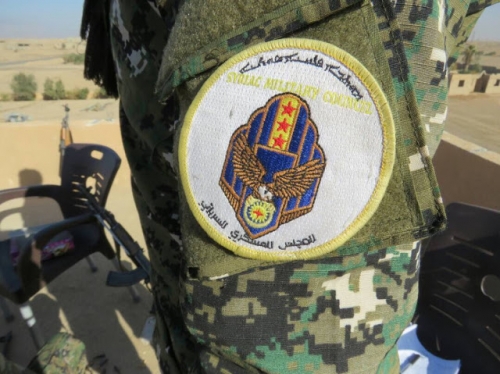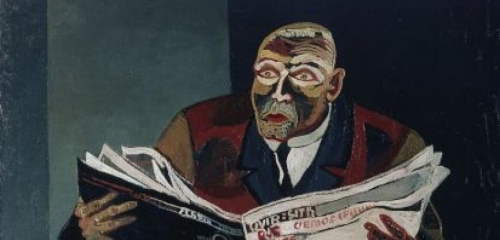
Presseschau
März 2018
AUßENPOLITISCHES
Weitere Spenden nach Kritik
George Soros finanziert Brexit-Gegner
https://jungefreiheit.de/politik/ausland/2018/george-soro...
Rechtsextremismus
Jagdszenen in der polnischen Provinz
http://www.sueddeutsche.de/politik/rechtsextremismus-jagd...
Sozialdemokraten wollen Asylrecht auf dänischem Boden abschaffen
https://www.welt.de/politik/ausland/article173471518/Daen...
Kurswechsel
Dänemarks Sozialdemokraten für Abschaffung des Asylrechts
https://jungefreiheit.de/politik/ausland/2018/daenemarks-...
Armes, dummes Schweden
Die schwedische Regierung leugnet das krachende Scheitern der Integration. In Städten bildeten sich unterdessen rechtsfreie No-Go-Zonen.
https://bazonline.ch/ausland/europa/armes-dummes-schweden...
Tschechische Regierung will Schulfach „Wehrerziehung“ einführen
https://jungefreiheit.de/politik/ausland/2018/tschechisch...
Erdogan beim Papst : Ein historischer Besuch auf Augenhöhe
http://www.faz.net/aktuell/politik/ausland/papst-franzisk...
Türkische Offensive in Afrin
Syrische Armee soll sich mit Kurden verbündet haben
https://jungefreiheit.de/politik/ausland/2018/syrische-ar...
Nach Freilassung von Deniz Yücel – Türkei hofft auf Panzer-Kooperation mit Deutschland
http://www.epochtimes.de/politik/deutschland/nach-freilas...
Israel verschickt Ausweisungsbescheide an ungewollte Migranten
https://www.welt.de/politik/ausland/article173197265/Ruec...
Bagdad: Deutsche IS-Anhängerin zu sechs Jahren Haft verurteilt
Laut einem Medienbericht muss die 17-jährige Linda W. im Irak sechs Jahre ins Gefängnis. Sie war nach ihrer Radikalisierung zum IS nach Mossul gereist.
http://www.zeit.de/gesellschaft/zeitgeschehen/2018-02/bag...
https://www.mdr.de/sachsen/bautzen/urteil-gegen-linda-w-i...
(Abenteuerliche Konstruktion der linksliberalen Internetpresse. So wird ohne Beweise eine Linie vom jugendlichen Amokläufer über rechtsextreme Gruppen in den USA zu "weißen, jungen Männern" gezogen. Gedankenmanipulation vom Feinsten. Überschrift auf der Gesamt-Webseite: "Weiß, gewalttätig und hasserfüllt.")
"Republic of Florida": So gefährlich sind rechtsextreme Gruppen in den USA
https://www.gmx.net/magazine/news/republic-of-florida-gef...
„O Canada“ : Kanadische Hymne wird genderneutral
http://www.faz.net/aktuell/gesellschaft/menschen/o-canada...
Erste staatliche Kryptowährung
Venezuelas neues Geld aus dem Nichts
https://jungefreiheit.de/wirtschaft/2018/venezuelas-neues...
„Landumverteilung“
Südafrika will weiße Farmer enteignen
https://jungefreiheit.de/politik/ausland/2018/suedafrika-...
„Landreform“
Südafrikanisches Parlament stimmt für Enteignung von Weißen
https://jungefreiheit.de/politik/ausland/2018/suedafrikan...
http://www.sueddeutsche.de/politik/besitzverhaeltnisse-su...
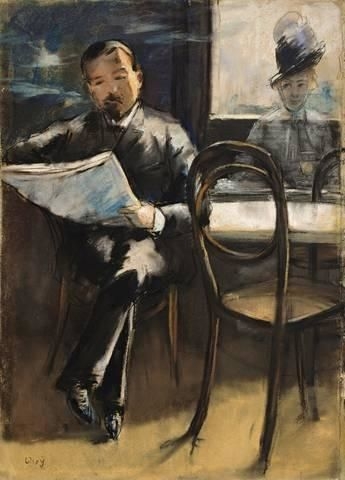
INNENPOLITISCHES / GESELLSCHAFT / VERGANGENHEITSPOLITIK
Merkel und ihre Zukunft, Flüchtlinge, Islam, Kika und das Alter. Wenn Wahnsinn zum Programm wird
https://www.youtube.com/watch?v=vyliXWDgfvg
Die deutsche Lust am Niedergang
Wer die Politik in Deutschland verfolgt, den überkommt Unbehagen. Wo bloss sind Tatkraft und Willensstärke hin? Die Deutschen scheinen sich selbst ein Bein nach dem anderen stellen zu wollen. Sie gefährden damit nicht nur ihren Wohlstand.
https://www.nzz.ch/meinung/die-deutsche-lust-am-niedergan...
Ressortverteilung
Gabriel fühlt sich von der SPD respektlos behandelt
https://jungefreiheit.de/politik/deutschland/2018/gabriel...
Verzicht auf Ministeramt
Hoch gepokert, völlig verzockt – das Ende für Martin Schulz
https://www.welt.de/politik/deutschland/article173392949/...
Laschet warnt CDU vor Rechtsruck
https://jungefreiheit.de/politik/deutschland/2018/laschet...
Kramp-Karrenbauer strikt gegen Rechtsruck der CDU
https://www.welt.de/politik/deutschland/article173900093/...
Heimatministerium: Deutschland soll werden, wie es nie war
"Heimat" ist kein politisch unschuldiger Begriff, daran ändert ein Ministerium nichts. Wir sollten das Wort dem rechten Rand überlassen.
Von Daniel Schreiber
http://www.zeit.de/kultur/2018-02/heimatministerium-heima...
(Dazu ein Kommentar)
Debatte um Heimatministerium
Globalisierer sorgen sich um einen Begriff
von Claus-M. Wolfschlag
https://jungefreiheit.de/debatte/kommentar/2018/globalisi...
("Grüne")
Deutsche Identität
Hofreiter: „Fixierung auf Nationalstaat ist etwas Irrtümliches“
https://jungefreiheit.de/politik/deutschland/2018/hofreit...
Warnung vor falscher Toleranz
Gauck zeigt sich erschreckt von Multikulti-Folgen
https://jungefreiheit.de/politik/deutschland/2018/gauck-z...
http://www.rp-online.de/nrw/staedte/duesseldorf/joachim-g...
581 Millionen Euro für 2017
Rekordzuschuss für parteinahe Stiftungen
https://www.tagesschau.de/inland/parteinahe-stiftungen-10...
Überlastete Beamte
Berliner Polizei: Über 55.000 Verbrechen bleiben unbearbeitet
https://jungefreiheit.de/politik/deutschland/2018/berline...
AfD-Anfrage
Beim Kindergeld für EU-Ausländer gibt sich die Bundesregierung ahnungslos
https://jungefreiheit.de/politik/deutschland/2018/beim-ki...
Bundestag
AfD: Bundesregierung muß sich von Yücel distanzieren
https://jungefreiheit.de/politik/deutschland/2018/afd-bun...
Äußerungen von Deniz Yücel
Deutscher Journalistenverband wirft AfD „Medienhetze“ vor
https://jungefreiheit.de/politik/deutschland/2018/deutsch...
Gottfried Curio (AfD) über Deniz Yücel
https://www.youtube.com/watch?v=G6XBRzcwOtQ
(Krematorium mit Hochofen verwechselt…)
Wegen Volksverhetzung
Grüner Landtagsvize zeigt AfD-Fraktionschef an
https://www.welt.de/politik/deutschland/article173378611/...
Aschermittwochs-Rede
Poggenburg: Man muß auch mal verbal die Sau rauslassen
https://jungefreiheit.de/politik/deutschland/2018/poggenb...
Anmerkungen zum Poggenburg-Defekt
Für die Alternative ist immer Aschermittwoch
http://www.pi-news.net/2018/02/fuer-die-alternative-ist-i...
AfD
Wie man Kredit verspielt
von Dieter Stein
https://jungefreiheit.de/debatte/streiflicht/2018/wie-man...
(CDU/CSU)
Mögliche Beobachtung durch Verfassungsschutz
Kooperationsverbot: AfD kritisiert Unions-Beschluß
https://jungefreiheit.de/politik/deutschland/2018/koopera...
Zum Islam konvertiert: „Ich werde der AfD immer treu bleiben“
Nach seinem Rücktritt als Landesvorstandmitglied und seinem Übertritt zum Islam beteuert Wagner, weiterhin AfD-Mitglied sein zu wollen. Wie die Zukunft des Islam aussehen soll, weiß er auch schon.
http://www.faz.net/aktuell/politik/inland/islam-konvertit...
AfD-Konvertit
„Wenn du den Islam angefasst hast, kannst du nicht Nein sagen“
https://www.welt.de/politik/deutschland/article173085483/...
Zur Antisemitismus-Tagung der AfD im Bundestag
Paukenschläge ohne Nachhall
von Jürgen Liminski
https://jungefreiheit.de/allgemein/2018/paukenschlaege-oh...
Veranstaltung zu Antisemitismus im Bundestag
Früherer israelischer Minister lobt AfD
https://jungefreiheit.de/politik/ausland/2018/frueherer-i...
Debatte über neuen Antisemitismus
Israelischer Botschafter rügt Eitan für AfD-Lob
https://jungefreiheit.de/politik/ausland/2018/israelische...
Israels Botschafter und die AfD
Ein Diplomat in den Niederungen der Innenpolitik
von Thorsten Brückner
https://jungefreiheit.de/debatte/kommentar/2018/ein-diplo...
Das ist erst der Anfang, der Anfang von etwas ganz Großem – Hamburgs Merkel-muss-weg-Demo
https://juergenfritz.com/2018/02/13/der-anfang/
(Zur "Merkel muss weg"-Demonstration)
Alsterblick von drinnen
Hamburg: Bericht aus einer verwunschenen Welt
https://www.tichyseinblick.de/meinungen/hamburg-bericht-a...
03.02.2018 - Unendlicher Strom von Demonstranten bei "Zukunft Heimat" in Cottbus.
https://www.youtube.com/watch?v=vOJXfZMY6Ng
Debatte um Cannabis-Konsum
Kriminalbeamten-Chef: Gebt das Hanf frei
https://jungefreiheit.de/kultur/gesellschaft/2018/krimina...
Holocaust-Professorin: «Arisierung» in Frankfurt erforschen
http://www.allgemeine-zeitung.de/politik/hessen/holocaust...
Millionenbetrag für NS-Verfolgte
Deutschland entschädigt algerische Juden
https://www.n-tv.de/politik/Deutschland-entschaedigt-alge...
Meinung
Stolpersteine und falsche Juwelen
von Thorsten Hinz
https://jungefreiheit.de/debatte/kommentar/2018/falsche-j...

LINKE / KAMPF GEGEN RECHTS / ANTIFASCHISMUS / RECHTE
Fördergelder
Extremismusbekämpfung: 1,5 zu 116 Millionen
von Felix Krautkrämer
https://jungefreiheit.de/politik/deutschland/2018/extremi...
Staatliche Förderung
Geldsegen in Millionenhöhe für Amadeu-Antonio-Stiftung
https://jungefreiheit.de/politik/deutschland/2018/geldseg...
Frankfurt
Oberbürgermeister der Intoleranz
Peter Feldmanns Begünstigung der Antidemokraten
http://www.bff-frankfurt.de/artikel/index.php?id=1278
SPD: „Kampf gegen Links“ ist gescheitert
https://jungefreiheit.de/politik/deutschland/2018/spd-kam...
(Ein Einblick in die linksextreme Psyche)
Staat.Nation.Buchmesse.Scheisse – ein Aufruf zur Gewalt
https://sezession.de/58240/staat-nation-buchmesse-scheiss...
Nach Immobiliengeschäft
Berliner Verein "Gesicht Zeigen!" vor die Tür gesetzt
Der Geschäftsstelle einer antirassistischen Initiative muss ihre bislang mietfreien Büros räumen. Trotz prominenter Hilfe gibt es bisher keinen Ersatz.
http://www.tagesspiegel.de/berlin/nach-immobiliengeschaef...
Fall für den Verfassungsschutz
Die AfD tritt das Erbe der NPD an
https://www.n-tv.de/politik/politik_kommentare/Die-AfD-tr...
(Immerhin eine Überzeugungstäterin…)
Ersatzfreiheitsstrafe
Tortenwurf auf AfD-Politikerin: Studentin muß ins Gefängnis
https://jungefreiheit.de/politik/deutschland/2018/tortenw...
Karnevalsumzug
"Die Wanne ist voll" - Staatsschutz ermittelt wegen Mottowagen
http://www.rp-online.de/panorama/karneval-2017-2018-staat...
Falsche Parteienzugehörigkeit
AfD-Mitgliedschaft: Sozialverband will Kreisvorstand absetzen
https://jungefreiheit.de/politik/deutschland/2018/afd-mit...
Kritik an SPD und Union
Heimatministerium: Linkspartei wittert Deutschtümelei
https://jungefreiheit.de/politik/deutschland/2018/heimatm...
„heute-show“ vs. AfD
Das Staatskabarett hat wieder zugeschlagen
von Felix Krautkrämer
https://jungefreiheit.de/kultur/medien/2018/staatskabaret...
„heute show“
AfD fordert „Entfernung“ von Welke nach fragwürdigem Scherz
https://www.welt.de/kultur/medien/article173237864/heute-...
Ihre Gebühren bei der Arbeit: Behindertenwitze beim ZDF
http://www.achgut.com/artikel/ihre_gebuehren_bei_der_arbe...
heute-show
Staatskabarett auf Kosten Andersdenkender
von Boris T. Kaiser
https://jungefreiheit.de/debatte/kommentar/2018/staatskab...
"Die braune Fratze lugt hervor" - Gmx verrät Ausrichtung seiner Nachrichtendarstellung
https://unzensuriert.de/content/0026110-Die-braune-Fratze...
(Krudes Urteil)
Staatsanwaltschaft Berlin
Deutsche Diplomatin darf AfD als „Nazis“ bezeichnen
https://jungefreiheit.de/politik/deutschland/2018/deutsch...
Tweet von grünem Landtagsabgeordneten
Polizisten unter Generalverdacht
https://jungefreiheit.de/debatte/kommentar/2018/poliziste...
Die Eintracht weiter im Kampf gegen die dunkle Macht
Der oberste Vorsitzende wurde wieder gewählt
https://clauswolfschlag.wordpress.com/2018/02/20/die-eint...
„Widerstand als Christenpflicht“
Katholische Jugend fordert Katholikentag ohne AfD
https://jungefreiheit.de/politik/deutschland/2018/katholi...
("Zentrum für politische Schönheit")
Sonntagsheld (47) – Die Revolution frisst ihre Kinder
https://sezession.de/58178/sonntagsheld-47-die-revolution...
Getarnt als Gamer: Einblicke in eine rechtsradikale Troll-Armee
https://netzpolitik.org/2018/getarnt-als-gamer-einblicke-...
(Horror. So etwas gab es ja noch nie…)
Gegen alle, für die AfD
Rechte Trolle wollten Wahl beeinflussen
https://www.n-tv.de/politik/Rechte-Trolle-wollten-Wahl-be...
Stelle im Dornbusch
NPD-Mann Jagsch arbeitet für Frankfurt
Die Stadt Frankfurt hatte dem NPD-Politiker zunächst gekündigt. Doch nach langem Rechtsstreit ist er jetzt wieder im Jugend- und Sozialamt tätig.
http://www.fr.de/frankfurt/stelle-im-dornbusch-npd-mann-j...
Verfahren eingestellt
Justiz zeigt Nachsicht für AfD-Plakat-Zerstörer
von Felix Krautkrämer
https://jungefreiheit.de/politik/deutschland/2018/nachsic...
Angriff auf Wohnhaus
Anti-Merkel-Demo: Hamburgerin will sich Gewalt nicht beugen
von Felix Krautkrämer
https://jungefreiheit.de/politik/deutschland/2018/anti-me...
("Antifa" kämpft für Merkels Machterhalt)
„Merkel muß weg“-Demo
„Die Antifa hat keine Hemmungen“
von Felix Krautkrämer
https://jungefreiheit.de/politik/deutschland/2018/die-ant...
Nach Gewalt gegen Initiatorin
Antifa jubelt: Keine „Merkel muß weg“-Demo mehr
https://jungefreiheit.de/politik/deutschland/2018/antifa-...
Uta Ogilvie gibt auf – der Kampf aber hat gerade erst begonnen
https://juergenfritz.com/2018/02/15/uta-gibt-auf/
Hamburg
Fünfte Anti-Merkel-Demo unter massivem Polizeischutz
https://jungefreiheit.de/politik/deutschland/2018/fuenfte...
Sechs Teilnehmer einer Neonazi-Demo in Dresden verprügelt
https://www.op-online.de/politik/sechs-teilnehmer-einer-n...
JF-TV Aktuell
Dresden: Gestörtes Gedenken
https://jungefreiheit.de/politik/deutschland/2018/dresden...
Wegen Blockade
Frauenmarsch: AfD zeigt Politiker von Linkspartei und Grünen an
https://jungefreiheit.de/politik/deutschland/2018/frauenm...
Antifa-Angriff auf bekannte Gaststätte am Berliner Wannsee
https://www.signal-online.de/2018/02/18/antifa-angriff-au...
Rote SA spuckt Essen ins Essen
AntiFa-Anschlag auf Tafel – der Linksstaat schlägt zurück!
http://www.pi-news.net/2018/02/antifa-anschlag-auf-tafel-...

EINWANDERUNG / MULTIKULTURELLE GESELLSCHAFT
(Politikwissenschaftler findet Konflikte wunderbar und integrationsfördernd, weil sie die Modernisierung vorantreiben...)
PNN-Interview: Migration in Deutschland „Konflikte sind wunderbar“
Der Politikwissenschaftler Aladin El-Mafaalani geht davon aus, dass durch gelungene Integration das Stresspotential in einer Gesellschaft steigt. Aber die Konflikte sieht er als Motor für sozialen Wandel.
http://www.pnn.de/potsdam/1254727/
"Wir tauschen euch aus"
Bevölkerungsaustausch in den Tagesthemen
https://www.youtube.com/watch?v=aP2F6brrJXQ
https://www.compact-online.de/wir-wagen-ein-historisch-ei...
(Erhöhung der Konsumentenquote)
Migranten aller Welt, vereinigt euch in Deutschland!
Das Institut der deutschen Wirtschaft hat heute eine neue Studie mit der Überschrift „Zuwanderung: Mehr Menschen, mehr Geld, mehr Konsum“ beworben.
Von Felix Menzel
https://www.blauenarzisse.de/migranten-aller-welt-vereini...
Bosbach deckt CDU/CSU Lügen auf - 6.2.2018
https://www.youtube.com/watch?v=-lJ3Gd9FnaA&spfreload=1
EU-Parlament bestimmt die Regeln: Die GroKo hat beim Thema "Obergrenze" nichts zu melden
https://www.focus.de/finanzen/experten/fluechtlings-oberg...
Der Soziologe Robert Hepp ist 80 – ein Interview
https://sezession.de/58228/der-soziologe-robert-hepp-ist-...
Hamburg: Jeder zweite untersuchte Flüchtling lügt beim Alter
https://jungefreiheit.de/politik/deutschland/2018/hamburg...
Illegale Grenzübertritte
Migranten suchen neue Routen nach Deutschland
http://www.spiegel.de/politik/deutschland/fluechtlinge-il...
("Weiter so"…)
Cottbus
Mit Scheuklappen durch die Asylkrise
von Felix Krautkrämer
https://jungefreiheit.de/debatte/kommentar/2018/mit-scheu...
Integration gefährdet
„Wir saufen ab“: Freiberg stoppt Zuzug von Flüchtlingen
https://jungefreiheit.de/politik/deutschland/2018/wir-sau...
Aufnahmekosten
50.000 Euro pro unbegleitetem jungen Flüchtling
https://www.welt.de/politik/deutschland/article173425414/...
Asyl-Posse
Mohamed alias Fahtl alias Kamal alias …?
von Felix Krautkrämer
https://jungefreiheit.de/politik/deutschland/2018/mohamed...
Bayern
Abschiebeflug startet mit weniger Passagieren
https://jungefreiheit.de/allgemein/2018/abschiebeflug-sta...
Religionsfreiheit
Gericht verbietet Muezzin-Ruf in Oer-Erkenschwick
https://jungefreiheit.de/kultur/gesellschaft/2018/gericht...
(Essener Tafel)
Streit um Nationalität
Keine ausländischen Neukunden: Tafel-Bundeschef hat Verständnis
https://jungefreiheit.de/politik/deutschland/2018/keine-a...
(Essener Tafel)
Die letzten beißen die Hunde
von Michael Paulwitz
https://jungefreiheit.de/debatte/kommentar/2018/die-letzt...
Ein Wort zur Essener Tafel
https://www.youtube.com/watch?time_continue=4&v=lg4oT...
Streit bei der Tafel | SAT.1 Frühstücksfernsehen
https://www.youtube.com/watch?v=SFp-YhpQbRE
Nach Farbanschlag
Essener Tafel-Chef: „Bin kurz davor hinzuschmeißen“
https://jungefreiheit.de/politik/deutschland/2018/essener...
(Interview)
Guido Reil
Die wirklich Bedürftigen werden verdrängt
von Felix Krautkrämer
https://jungefreiheit.de/debatte/interview/2018/die-wirkl...
Meinung
Merkels heuchlerische Kritik an der Essener Tafel
von Felix Krautkrämer
https://jungefreiheit.de/debatte/kommentar/2018/merkels-h...
Heilbronn
Ausländerfeindliches Motiv
Rentner sitzt nach Messerattacke gegen Flüchtlinge in Haft
https://jungefreiheit.de/politik/deutschland/2018/rentner...
„Staatsanwälte vor Ort“
NRW geht gegen Duisburger Familienclans vor
https://jungefreiheit.de/politik/deutschland/2018/nrw-geh...
Schweiz
Kanton Wallis erteilt Flüchtlingen Sexualkundeunterricht
https://jungefreiheit.de/politik/ausland/2018/kanton-wall...
Köln, Cottbus, Kandel
https://sezession.de/58175/koeln-cottbus-kandel
Beziehungsdrama in Neukölln
Syrer sticht Ex-Freundin auf Sonnenallee nieder – Flüchtlinge schreiten ein
https://www.bz-berlin.de/berlin/neukoelln/syrer-sticht-ex...
Frankfurt
Sex-Angriffe an Goethe-Uni
Polizeigewerkschafter Wendt: „Lebenswirklichkeit hat Goethe-Uni eingeholt“
http://www.fnp.de/lokales/frankfurt/Polizeigewerkschafter...
Vergewaltigungsattacken an Frankfurter Universität
Die Realität blamiert brutal ideologische Verblendungen
http://www.bff-frankfurt.de/artikel/index.php?id=1271
Mehr sexuelle Übergriffe in Berlin an Silvester
https://jungefreiheit.de/politik/deutschland/2018/mehr-se...
JF-TV-Reportage
Frauen in Gefahr
https://jungefreiheit.de/kultur/medien/2018/frauen-in-gef...
Troisdorf
Geldbuße für Angriff auf Arzt – Palästinenser geht in Berufung
https://jungefreiheit.de/politik/deutschland/2018/geldbus...
Mord aus Christenhaß: Lebenslang für Asylbewerber
https://jungefreiheit.de/politik/deutschland/2018/mord-au...
(Remmidemmi im beschaulichen Donauwörth…)
Donau-Ries
Gelage und Pöbeleien am Donauwörther Bahnhof
Die Beschwerden über Zustände in Donauwörth werden lauter. Gruppen schwarzafrikanischer Asylbewerber stehen dabei im Fokus. Betroffen ist oftmals der Stadtbus.
http://www.augsburger-allgemeine.de/donauwoerth/Gelage-un...
(Der Zugverkehr zwischen Augsburg, Nürnberg und Ulm kam zum Erliegen…)
Donauwörth
Abgelehnte Asylbewerber sorgten für Bahnhofssperrung
Rund 150 Asylbewerber machten in Donauwörth mobil – und wollten offenbar nach Italien. Der Zugverkehr kam zeitweise zum Erliegen.
http://www.augsburger-allgemeine.de/donauwoerth/Abgelehnt...
Hund auf Passanten gehetzt, Polizist geschlagen, keine Haft
https://jungefreiheit.de/kultur/gesellschaft/2018/hund-au...
Pöbeleien und Drohungen: Die Stimmung in Sigmaringen trübt sich ein
Eine Handvoll Flüchtlinge verunsichert Sigmaringer. Zuletzt kam es rund um den Sigmaringer Bahnhof und in der Bahnhofshalle zu großen Problemen. Bürgermeister Schärer will nun schärfere Sanktionen.
https://www.suedkurier.de/nachrichten/baden-wuerttemberg/...
Fulda
Männer mit Messer treiben Opfer vor sich her
http://www.nh24.de/index.php/polizei/98658-2018-02-13-15-...
Ausländerkriminalität
Jugendbande tyrannisiert Jena
https://jungefreiheit.de/politik/deutschland/2018/jugendb...
Berlin
Getöteter Pfarrer: Verdächtiger in Psychiatrie eingeliefert
https://www.morgenpost.de/berlin/article213537429/Getoete...
Krefeld
Jugend-Trainer krankenhausreif getreten
Nach Gewalt: Kreisklasse-Vereine boykottieren Türken-Club
https://jungefreiheit.de/allgemein/2018/nach-gewalt-kreis...
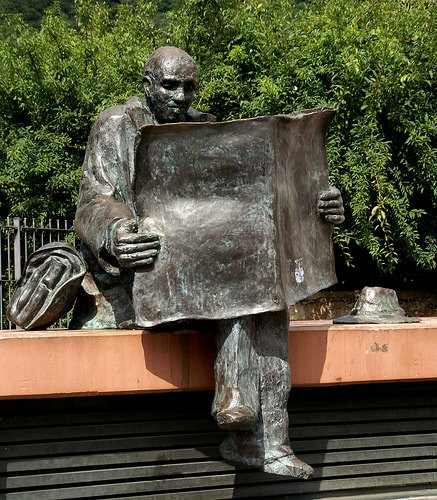
KULTUR / UMWELT / ZEITGEIST / SONSTIGES
Das Haus der drei Religionen in Berlin
House of One – Der Traum der Gnosis von der Welteinheitsreligion
https://www.katholisches.info/2018/02/house-of-one-der-tr...
GEZ-Medien
Der Staatsfunk kriegt die Krise
von Michael Paulwitz
https://jungefreiheit.de/debatte/kommentar/2018/der-staat...
FDP fordert Senkung des Rundfunkbeitrags
https://jungefreiheit.de/politik/deutschland/2018/fdp-for...
Gericht: Keine Barzahlung von Rundfunkgebühren
https://jungefreiheit.de/kultur/medien/2018/gericht-keine...
(Zensur im Internet)
Twitter
Der, vor dem Sie Ihr Blogwart immer gewarnt hat
von Felix Krautkrämer
https://jungefreiheit.de/debatte/kommentar/2018/der-vor-d...
Grand Prix de Prüderie: Das Ende der Boxenluder
http://www.achgut.com/artikel/grand_prix_de_pruederie_das...
#metoo-Kampagne statt Realität auch in Frankfurt
Verdrängung der konkreten Ursachen sexueller Belästigung
http://www.bff-frankfurt.de/artikel/index.php?id=1275
- Internationale Filmfestspiele
#MeToo: Schauspielerin fordert schwarzen Berlinale-Teppich
https://jungefreiheit.de/kultur/gesellschaft/2018/metoo-s...
(Identitäre Aktion gegen verlogene #MeeToo-Veranstaltung auf der Berlinale)
Identitäre stürmen Veranstaltung der Berlinale zu "MeToo"
http://www.bento.de/today/berlin-identitaere-stuermen-ver...
db120 auf der Berlinale – ein Interview
https://sezession.de/58238/db120-auf-der-berlinale-ein-in...
„Sexismus“: Museum hängt Gemälde mit nackten Frauen ab
https://jungefreiheit.de/politik/ausland/2018/sexismus-mu...
Gender-Idiotie in fünf Minuten offengelegt
https://www.youtube.com/watch?v=MqoHeZlAaEg&feature=y...
Rechtsextremismus und Frauenrechte
Im Feminismus geht es gerade um das Gegenteil
http://www.sueddeutsche.de/kultur/metoo-debatte-feminismu...
Sind wir Feministinnen?
In der "Süddeutschen Zeitung" schreibt man zur Kampagne #120Dezibel:
Rechte Gruppen wollen in der „Me Too“-Debatte den Kampf um Frauenrechte kapern. Das kann niemals Feminismus sein.
https://sezession.de/58185/sind-wir-feministinnen
Zu viele "weiße glückliche Christen"? Ungarns Stadt vom EU-Kulturwettbewerb ausgeschlossen
https://deutsch.rt.com/newsticker/65577-zu-viele-weisse-g...
Kapitaldelikte (1): Was in der Wirtschaft Werte schafft
https://sezession.de/58211/kapitaldelikte-1-was-in-der-wi...
Sozialpopulismus, aber wie?
https://sezession.de/57450/sozialpopulismus-aber-wieij
Meinung
Metapolitik und die Lage
von Thorsten Hinz
https://jungefreiheit.de/debatte/kommentar/2018/metapolit...
Die Mohrenjagd in Frankfurt
Zwei Apotheken unter Rassismusverdacht
http://www.bff-frankfurt.de/artikel/index.php?id=1269
Die „Mohren-Jagd“ war eine Zumutung zu viel
Kater und Jammer bei der Frankfurter Ausländervertretung
http://www.bff-im-roemer.de/index.php?id=44&no_cache=...
Rassismus
Das sagt eine Konfliktforscherin zur Diskussion um die Frankfuter "Mohren-Apotheke"
http://www.fnp.de/nachrichten/politik/Das-sagt-eine-Konfl...
Fuldaer Rosenmontagszug findet dieses Mal ohne den „Südend-Neger“ statt
http://www.fuldaerzeitung.de/regional/fulda/fuldaer-rosen...
Nach Nazi-Vergleich: VW will US-Prozesse verschieben lassen
http://www.waz-online.de/Wolfsburg/Volkswagen/VW-will-US-...
«Der andere Blick»: Wo sind die deutschen Tugenden geblieben?
Fleiss und Pflichtgefühl stehen 2017 nicht mehr hoch im Kurs. Auszug aus dem neuen Politik-Newsletter der NZZ für Deutschland.
https://www.nzz.ch/international/der-andere-blick-wo-sind...
Vom konservativen Minimum zum konservativen Manifest!
http://www.pi-news.net/2018/02/vom-konservativen-minimum-...
Der Sonntagsfahrer: Der Konformisten-Test
http://www.achgut.com/artikel/der_sonntagsfahrer_der_konf...
Kapitaldelikte (2): Wachstum ohne Ende
https://sezession.de/58212/kapitaldelikte-2-wachstum-ohne...
Solidarische Landwirtschaft
https://www.solidarische-landwirtschaft.org/solawis-finde...
„Geofencing”: Wie Händler Smartphones für Werbung nutzen
http://www.taunus-zeitung.de/ratgeber/netzwelt/Geofencing...
Glanz und Elend der Weimarer Republik
https://clauswolfschlag.wordpress.com/2018/02/22/glanz-un...
(Jubliäum der Goebbels-Rede)
„Wollt ihr den totalen Krieg?“
Ausrufungszeichen mit blanker Verzweiflung
von Stefan Scheil
https://jungefreiheit.de/wissen/geschichte/2018/ausrufung...
75. Jahrestag der Hinrichtung der Geschwister Scholl
Die Ehre des Vaterlands retten
von Karlheinz Weißmann
https://jungefreiheit.de/debatte/kommentar/2018/die-ehre-...
Der schwarze Grundzustand
https://morgenwacht.wordpress.com/2014/05/13/der-schwarze...
(TV-Kritik "Aufbruch ins Ungewisse")
Die Läuterung wird ausbleiben
von Thorsten Hinz
https://jungefreiheit.de/kultur/2018/die-laeuterung-wird-...
(TV-Kritik "Aufbruch ins Ungewisse")
Aufbruch nach Wakanda (1): Passion der Bobos
https://sezession.de/58215/aufbruch-nach-wakanda-1
Aufbruch nach Wakanda (2): Black Panther Supremacy
https://sezession.de/58230/aufbruch-nach-wakanda-2-black-...
»Soldat ohne Befehl« – Neue Biographie über Ernst von Salomon erschienen
https://sezession.de/58176/soldat-ohne-befehl-neue-biogra...
Martin Mosebachs Buch über koptische Märtyrer
Rekonstruktion eines Massenmords
http://www.deutschlandfunkkultur.de/martin-mosebachs-buch...
Neu: Lisa Fitz brisanter Song zensurgefährdet?
https://www.youtube.com/watch?v=XT8rb56jn8s
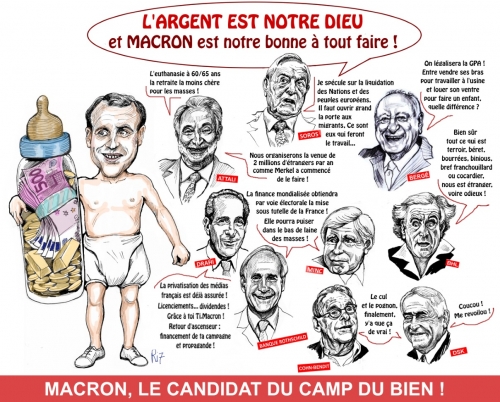


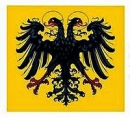



 del.icio.us
del.icio.us
 Digg
Digg
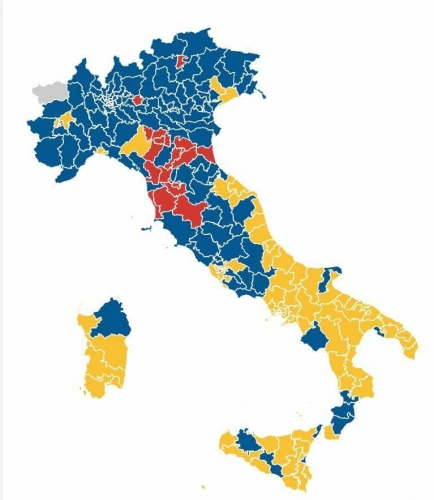
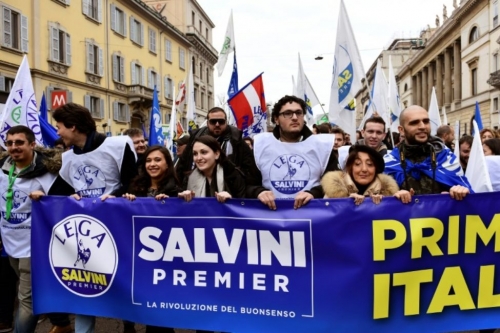






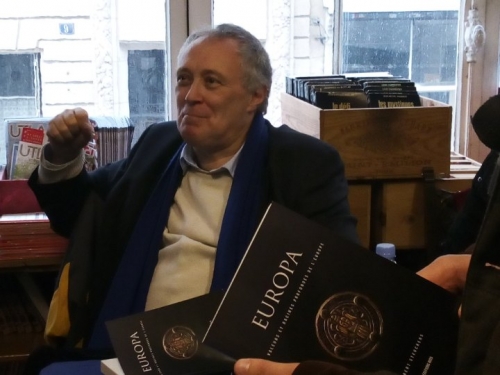
 Robert Steuckers sur Radio Courtoisie :
Robert Steuckers sur Radio Courtoisie : 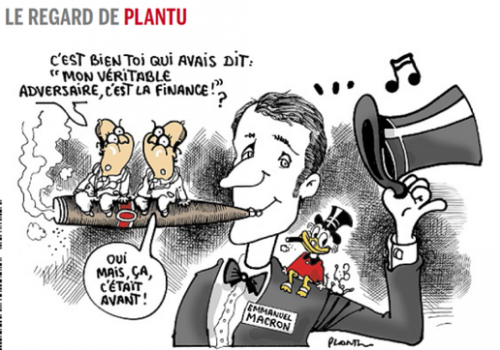


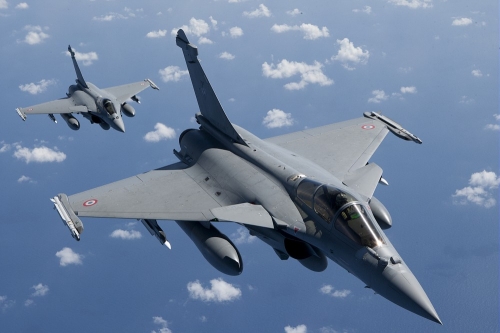


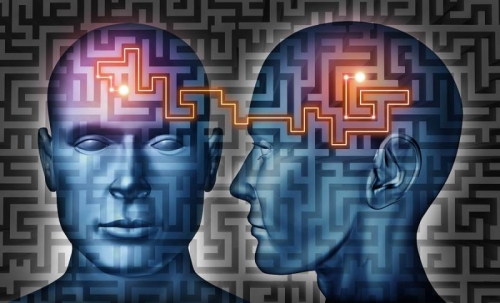
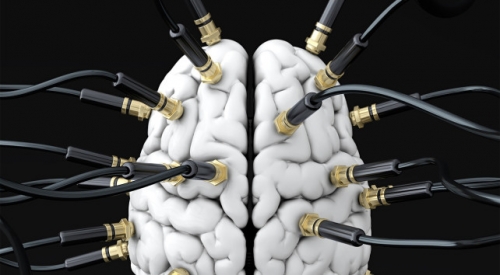


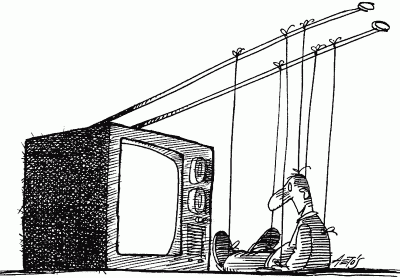
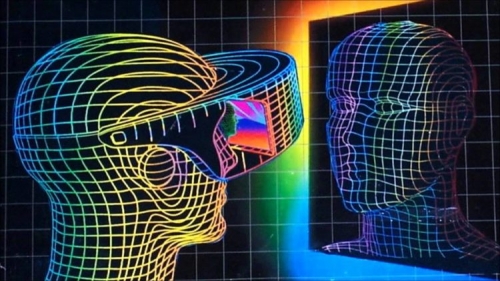

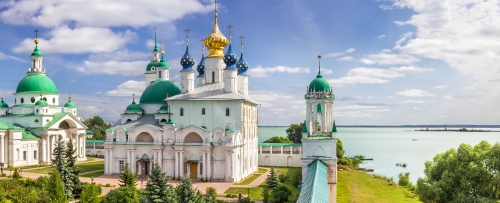





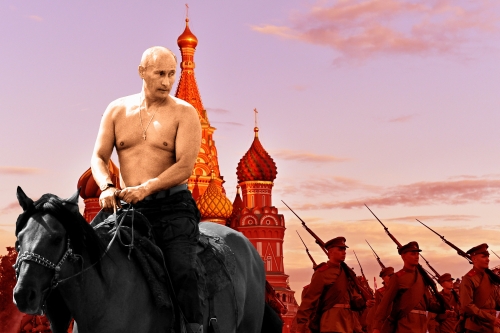
 Justement, dès 2010, le
Justement, dès 2010, le  Le général Marshall Webb (ça ne s’invente pas), confirmait quant à lui ce recours à des scénarios hybrides par ses troupes, lorsqu’il était encore patron des forces spéciales de l’OTAN. C’est ce même général qu’on voit sur la célèbre et curieuse photo de l’état-major suivant en direct la mise à mort de Ben Laden dans la salle de crise de la Maison blanche.
Le général Marshall Webb (ça ne s’invente pas), confirmait quant à lui ce recours à des scénarios hybrides par ses troupes, lorsqu’il était encore patron des forces spéciales de l’OTAN. C’est ce même général qu’on voit sur la célèbre et curieuse photo de l’état-major suivant en direct la mise à mort de Ben Laden dans la salle de crise de la Maison blanche.
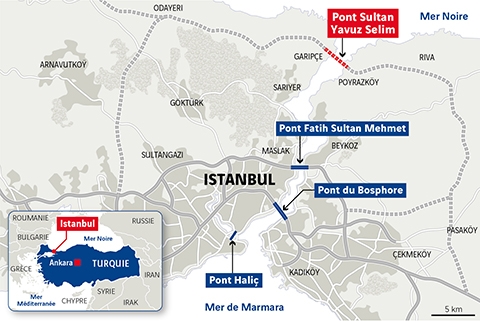






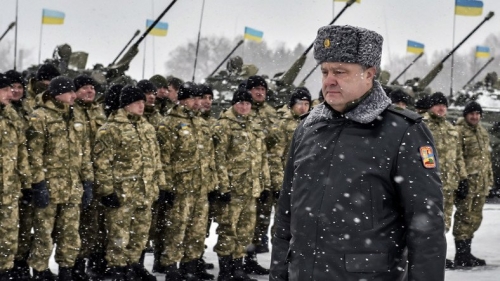
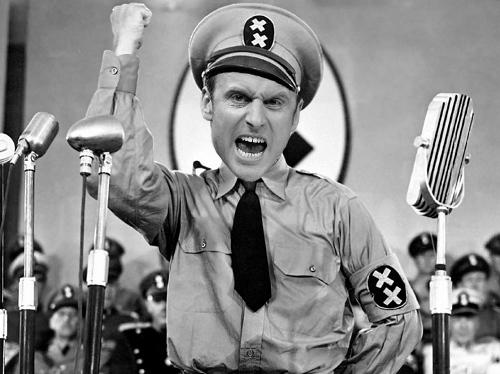

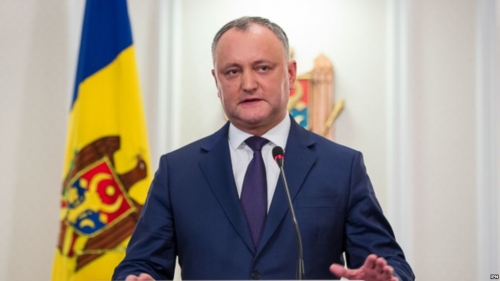
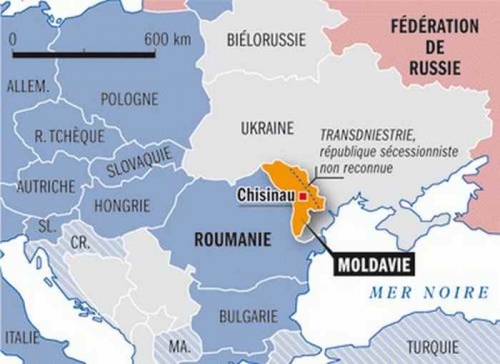
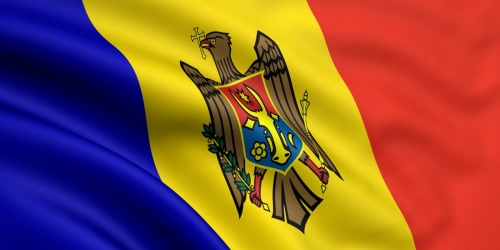

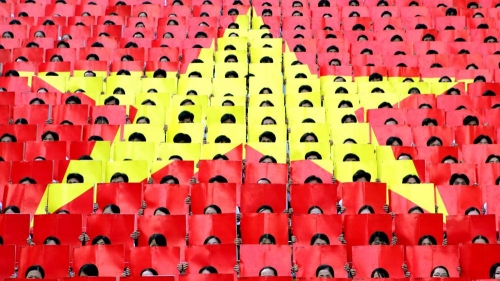

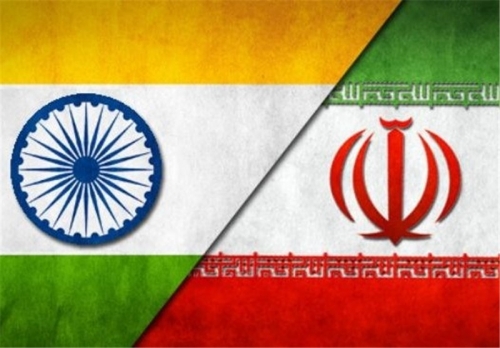
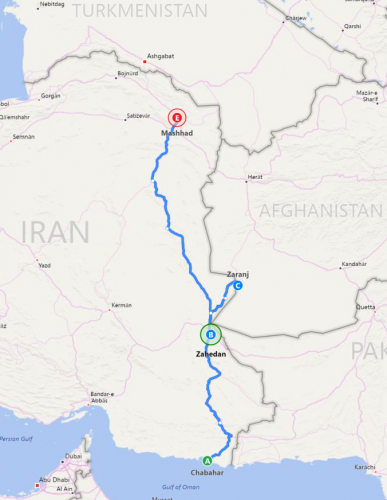


 Bien que ce livre soit dédié « aux fainéants, aux cyniques, aux extrêmes » – il aurait pu l’être aussi à tous ceux qui dans les gares « ne sont rien », ce n’est pas le premier pamphlet contre l’ancien secrétaire général adjoint de l’Élysée aux temps de « Flamby». Michel Drac prévient qu’il « n’a rien contre Macron en tant que personne. En fait, c’est le contraire : le nouveau Président ne nous fait pas honte. Il n’a pas l’attitude d’un agité (Sarkozy), et ses discours ne rassemblent pas à de mauvaises rédactions de troisième (Hollande). Le problème, ce n’est pas Macron. C’est le système derrière lui (p. 140) ».
Bien que ce livre soit dédié « aux fainéants, aux cyniques, aux extrêmes » – il aurait pu l’être aussi à tous ceux qui dans les gares « ne sont rien », ce n’est pas le premier pamphlet contre l’ancien secrétaire général adjoint de l’Élysée aux temps de « Flamby». Michel Drac prévient qu’il « n’a rien contre Macron en tant que personne. En fait, c’est le contraire : le nouveau Président ne nous fait pas honte. Il n’a pas l’attitude d’un agité (Sarkozy), et ses discours ne rassemblent pas à de mauvaises rédactions de troisième (Hollande). Le problème, ce n’est pas Macron. C’est le système derrière lui (p. 140) ».  Un pessimisme certain imprègne les scénari diplomatiques pour la Gâteuse républicaine hexagonale. Dans l’un d’eux, « la politique euro-salafiste se conclut par un désastre complet. La France a cessé d’être une puissance mondiale aux yeux des classes dirigeantes de la planète. C’est maintenant une puissance régionale dont le rayonnement ne dépasse pas l’Europe, la Méditerranée occidentale et l’Afrique occidentale. Et cela malgré l’étendue de son domaine maritime et des armes nucléaires. Hors de sa zone d’influence restreinte, Paris n’existe plus que comme supplétif des États-Unis (p. 106) ». Michel Drac insiste sur la souveraineté très limitée de l’Hexagone qui « n’est plus un pays indépendant. Sa politique étrangère est définie entre Washington, Londres, Bruxelles – OTAN et tel-Aviv. Sa politique économique est décidée à Berlin. Sa législation est dictée par la Commission européenne (p. 86) ». Que fera Macron s’il doit choisir entre un pôle atlantique et un autre continental, entre Washington (et plus secondairement Londres) et Berlin ? Nul ne le sait. Devant la montée en puissance irrésistible des États extrême-orientaux (Chine, Inde, Singapour, Corée du Nord) qui contrarie la domination planétaire des États-Unis, la France « doit choisir entre la neutralité et la vassalité. Si elle se reconnaît vassale des États-Unis, elle sauvera peut-être ses intérêts impérialistes en Afrique. Mais elle risque d’être entraînée dans des combats périlleux au service d’un suzerain déloyal. Si elle choisit la neutralité, elle devra le faire en lien avec les autres Européens (p. 49) ».
Un pessimisme certain imprègne les scénari diplomatiques pour la Gâteuse républicaine hexagonale. Dans l’un d’eux, « la politique euro-salafiste se conclut par un désastre complet. La France a cessé d’être une puissance mondiale aux yeux des classes dirigeantes de la planète. C’est maintenant une puissance régionale dont le rayonnement ne dépasse pas l’Europe, la Méditerranée occidentale et l’Afrique occidentale. Et cela malgré l’étendue de son domaine maritime et des armes nucléaires. Hors de sa zone d’influence restreinte, Paris n’existe plus que comme supplétif des États-Unis (p. 106) ». Michel Drac insiste sur la souveraineté très limitée de l’Hexagone qui « n’est plus un pays indépendant. Sa politique étrangère est définie entre Washington, Londres, Bruxelles – OTAN et tel-Aviv. Sa politique économique est décidée à Berlin. Sa législation est dictée par la Commission européenne (p. 86) ». Que fera Macron s’il doit choisir entre un pôle atlantique et un autre continental, entre Washington (et plus secondairement Londres) et Berlin ? Nul ne le sait. Devant la montée en puissance irrésistible des États extrême-orientaux (Chine, Inde, Singapour, Corée du Nord) qui contrarie la domination planétaire des États-Unis, la France « doit choisir entre la neutralité et la vassalité. Si elle se reconnaît vassale des États-Unis, elle sauvera peut-être ses intérêts impérialistes en Afrique. Mais elle risque d’être entraînée dans des combats périlleux au service d’un suzerain déloyal. Si elle choisit la neutralité, elle devra le faire en lien avec les autres Européens (p. 49) ».
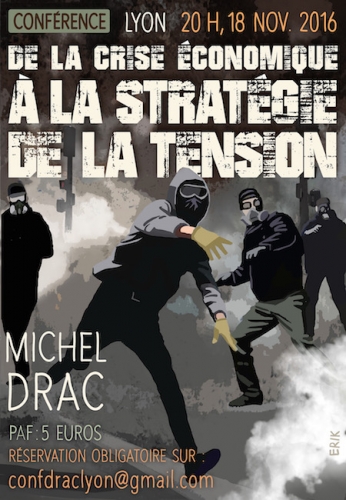 La « stratégie de la tension » et les autres manipulations terroristes plus ou moins sous faux-drapeau contribuent aux moments de crise majeure. Celles-ci se préparent au cœur de divers cénacles intérieurs (les services secrets français) ou extérieurs (les officines anglo-saxonnes, mais pas seulement…). Michel Drac envisage par exemple la CIA inciter son vieux complice, Cosa Nostra, à soutenir l’indépendantisme sicilien tandis que le gouvernement italien très anti-euro obtient le soutien, direct ou non, de la City de Londres, ce qui attise les tensions financières (et même politiques) entre Londres et Berlin. Londres et Washington choisissent finalement l’explosion de la monnaie unique européenne afin de briser nette toute puissance européenne émergente. Comment dans ces circonstances peut se positionner Macron qui se veut en même temps proche des protagonistes ? De son choix dépendra l’avenir du projet européen. « Le point de rupture est proche. De trois choses l’une. Ou bien l’euro engendre un super-État européen. Ou bien la zone explose. Ou bien une combinaison des deux : le super-État naît, mais restreint à certains membres de la zone. Allemagne et périphérie, peut-être avec la France. Mais pas avec l’Europe du Sud (p. 46). » Cette dernière correspond assez bien aux thèses de Laurent Wauquiez avancées dans son essai de 2014, Europe : il faut tout changer. Laurent Wauquiez devient d’ailleurs le Premier ministre de Macron dans une nouvelle cohabitation dans l’une des hypothèses envisagées.
La « stratégie de la tension » et les autres manipulations terroristes plus ou moins sous faux-drapeau contribuent aux moments de crise majeure. Celles-ci se préparent au cœur de divers cénacles intérieurs (les services secrets français) ou extérieurs (les officines anglo-saxonnes, mais pas seulement…). Michel Drac envisage par exemple la CIA inciter son vieux complice, Cosa Nostra, à soutenir l’indépendantisme sicilien tandis que le gouvernement italien très anti-euro obtient le soutien, direct ou non, de la City de Londres, ce qui attise les tensions financières (et même politiques) entre Londres et Berlin. Londres et Washington choisissent finalement l’explosion de la monnaie unique européenne afin de briser nette toute puissance européenne émergente. Comment dans ces circonstances peut se positionner Macron qui se veut en même temps proche des protagonistes ? De son choix dépendra l’avenir du projet européen. « Le point de rupture est proche. De trois choses l’une. Ou bien l’euro engendre un super-État européen. Ou bien la zone explose. Ou bien une combinaison des deux : le super-État naît, mais restreint à certains membres de la zone. Allemagne et périphérie, peut-être avec la France. Mais pas avec l’Europe du Sud (p. 46). » Cette dernière correspond assez bien aux thèses de Laurent Wauquiez avancées dans son essai de 2014, Europe : il faut tout changer. Laurent Wauquiez devient d’ailleurs le Premier ministre de Macron dans une nouvelle cohabitation dans l’une des hypothèses envisagées.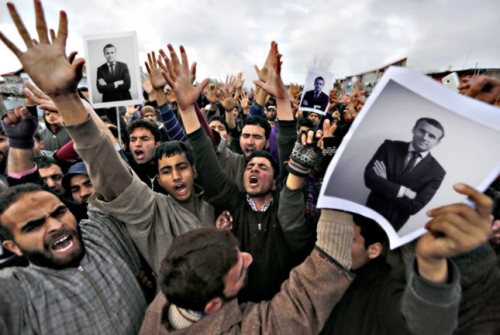
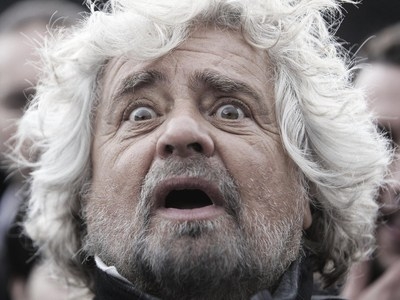 Si l’auteur décrit de manière convenable le « système russe : oligarchie hyper-centralisée tempérée d’anarchie provinciale (p. 54) » malgré une erreur vénielle sur le titre du premier ministre russe – celui-ci n’est pas président du Conseil des ministres, mais Président du gouvernement -, certaines de ses conjectures n’emportent pas l’adhésion. Prenons la plus optimiste d’entre elles, « Le printemps italien », qui voit la victoire du Mouvement Cinq Étoiles (M5S) aux législatives italiennes de mars prochain. Il prévoit un gouvernement de coalition entre la Lega de Matteo Salvini et le M5S, puis, dans la foulée, l’émergence d’une force semblable en France, d’abord apparue sur Facebook, Clair et Net, qui s’impose à la surprise aux élections anticipées et cohabite avec Macron. Or ce mouvement dégagiste exige déjà avec la seule différence de taille qu’il est « contre-populiste » : La République en Marche. En outre, Michel Drac ignore la réalité du mouvement fondé par le comique anti-berlusconien Beppe Grillo. Celui-ci se met désormais en retrait de sa création qui cumule les contradictions. Rapporté aux candidatures présidentielles françaises de 2017, le programme « grilliniste » emprunterait à Benoît Hamon, à Jean-Luc Mélenchon, à Marine Le Pen, à Jean Lassalle et à Jacques Cheminade. Grillo est hostile à l’euro et au droit du sol. Depuis quelques mois, le premier-ministrable du mouvement, Luigi Di Maio, s’est exprimé devant les cénacles atlantistes, a autorisé la liberté de vote sur le droit du sol, et ne souhaite plus quitter l’OTAN. En plus, « nous voulons rester dans l’Union européenne, exprime-t-il, et bien sûr, nous voulons rester dans l’euro (dans Le Monde, art. cit.) ». Le véritable danger pour l’Euroland surgirait probablement d’un gouvernement néo-berlusconien avec Forza Italia, la Lega et Frères d’Italie. En revanche, la situation rêvée des oligarques serait une entente surprise entre Forza Italia et le Parti démocrate au pouvoir actuellement, ce qu’envisage Berlusconi si la Lega passe devant lui en nombre de suffrages.
Si l’auteur décrit de manière convenable le « système russe : oligarchie hyper-centralisée tempérée d’anarchie provinciale (p. 54) » malgré une erreur vénielle sur le titre du premier ministre russe – celui-ci n’est pas président du Conseil des ministres, mais Président du gouvernement -, certaines de ses conjectures n’emportent pas l’adhésion. Prenons la plus optimiste d’entre elles, « Le printemps italien », qui voit la victoire du Mouvement Cinq Étoiles (M5S) aux législatives italiennes de mars prochain. Il prévoit un gouvernement de coalition entre la Lega de Matteo Salvini et le M5S, puis, dans la foulée, l’émergence d’une force semblable en France, d’abord apparue sur Facebook, Clair et Net, qui s’impose à la surprise aux élections anticipées et cohabite avec Macron. Or ce mouvement dégagiste exige déjà avec la seule différence de taille qu’il est « contre-populiste » : La République en Marche. En outre, Michel Drac ignore la réalité du mouvement fondé par le comique anti-berlusconien Beppe Grillo. Celui-ci se met désormais en retrait de sa création qui cumule les contradictions. Rapporté aux candidatures présidentielles françaises de 2017, le programme « grilliniste » emprunterait à Benoît Hamon, à Jean-Luc Mélenchon, à Marine Le Pen, à Jean Lassalle et à Jacques Cheminade. Grillo est hostile à l’euro et au droit du sol. Depuis quelques mois, le premier-ministrable du mouvement, Luigi Di Maio, s’est exprimé devant les cénacles atlantistes, a autorisé la liberté de vote sur le droit du sol, et ne souhaite plus quitter l’OTAN. En plus, « nous voulons rester dans l’Union européenne, exprime-t-il, et bien sûr, nous voulons rester dans l’euro (dans Le Monde, art. cit.) ». Le véritable danger pour l’Euroland surgirait probablement d’un gouvernement néo-berlusconien avec Forza Italia, la Lega et Frères d’Italie. En revanche, la situation rêvée des oligarques serait une entente surprise entre Forza Italia et le Parti démocrate au pouvoir actuellement, ce qu’envisage Berlusconi si la Lega passe devant lui en nombre de suffrages. Dans un autre scénario, plus terrifiant intitulé « La grande spolation », Michel Drac postule la destitution de Trump, l’assassinat de son successeur, Mike Pence, un 4 juillet 2019, la proclamation de la loi martiale par le gouvernement de continuité institutionnelle et l’instauration d’un État policier proche des intérêts israéliens. En prenant exemple sur les événements survenus outre-Atlantique, les grands États membres de l’Union soi-disant européenne (Allemagne, Espagne, France) renforcent leur législation anti-terroriste et l’étendent à des domaines inattendus tels les grèves, les manifestations et l’opposition verbale aux dirigeants. Dans ce scénario en partie tiré des rapports de la Trilatérale et du Club Bilderberg, Jean-Luc Mélanchon se trouve assigné à résidence et interdit de communication Internet et Marine Le Pen « internée en hôpital psychiatrique comme “ conspirationniste ” (p. 141) ». Suite à de fortes pressions gouvernementales, Laurent Wauquiez démissionne au profit de Valérie Pécresse. Toute opposition est assimilée à du terrorisme, ce qui facilite les « ajustements financiers […] opérés dans tous les pays de la zone par confiscation pure et simple des propriétés, via le plus souvent des moyens insidieux et indirects. En France par exemple, l’État est maintenant copropriétaire de toutes les propriétés immobilières. Il perçoit donc une redevance de copropriété (p. 144) ». Remplaçant l’ISF, le nouvel impôt sur la fortune immobilière (IFI) qui exonère au passage les plus-values colossales de la Finance anonyme et vagabonde, internationale préfigure des mesures semblables au champ d’expérience réelle grec (blocage des comptes bancaires des particuliers, contrôle des changes, prélèvement autorité de l’épargne par des gouvernements corrompus).
Dans un autre scénario, plus terrifiant intitulé « La grande spolation », Michel Drac postule la destitution de Trump, l’assassinat de son successeur, Mike Pence, un 4 juillet 2019, la proclamation de la loi martiale par le gouvernement de continuité institutionnelle et l’instauration d’un État policier proche des intérêts israéliens. En prenant exemple sur les événements survenus outre-Atlantique, les grands États membres de l’Union soi-disant européenne (Allemagne, Espagne, France) renforcent leur législation anti-terroriste et l’étendent à des domaines inattendus tels les grèves, les manifestations et l’opposition verbale aux dirigeants. Dans ce scénario en partie tiré des rapports de la Trilatérale et du Club Bilderberg, Jean-Luc Mélanchon se trouve assigné à résidence et interdit de communication Internet et Marine Le Pen « internée en hôpital psychiatrique comme “ conspirationniste ” (p. 141) ». Suite à de fortes pressions gouvernementales, Laurent Wauquiez démissionne au profit de Valérie Pécresse. Toute opposition est assimilée à du terrorisme, ce qui facilite les « ajustements financiers […] opérés dans tous les pays de la zone par confiscation pure et simple des propriétés, via le plus souvent des moyens insidieux et indirects. En France par exemple, l’État est maintenant copropriétaire de toutes les propriétés immobilières. Il perçoit donc une redevance de copropriété (p. 144) ». Remplaçant l’ISF, le nouvel impôt sur la fortune immobilière (IFI) qui exonère au passage les plus-values colossales de la Finance anonyme et vagabonde, internationale préfigure des mesures semblables au champ d’expérience réelle grec (blocage des comptes bancaires des particuliers, contrôle des changes, prélèvement autorité de l’épargne par des gouvernements corrompus).